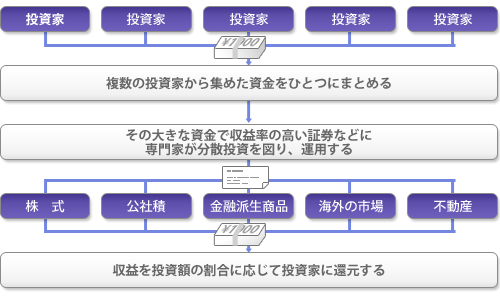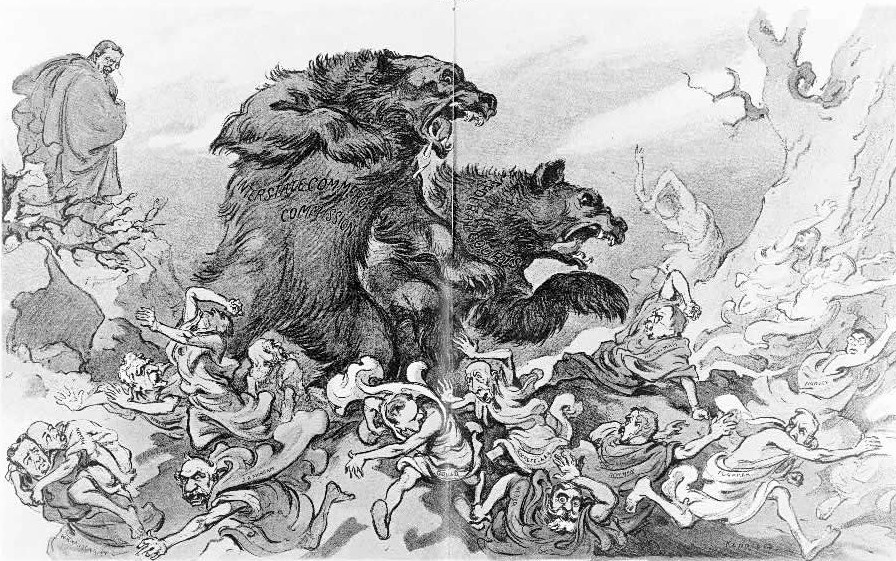Panic of 1907 Wikipedia the free encyclopedia
Post on: 6 Апрель, 2015 No Comment

Wall Street during the bank panic in October 1907. [ n 1 ]
The Panic of 1907 – also known as the 1907 Bankers’ Panic or Knickerbocker Crisis [ 1 ] – was a United States financial crisis that took place over a three week period starting in mid-October, when the New York Stock Exchange fell almost 50% from its peak the previous year. Panic occurred, as this was during a time of economic recession. and there were numerous runs on banks and trust companies. The 1907 panic eventually spread throughout the nation when many state and local banks and businesses entered bankruptcy. Primary causes of the run included a retraction of market liquidity by a number of New York City banks and a loss of confidence among depositors. exacerbated by unregulated side bets at bucket shops. [ 2 ] The panic was triggered by the failed attempt in October 1907 to corner the market on stock of the United Copper Company. When this bid failed, banks that had lent money to the cornering scheme suffered runs that later spread to affiliated banks and trusts, leading a week later to the downfall of the Knickerbocker Trust Company —New York City’s third-largest trust. The collapse of the Knickerbocker spread fear throughout the city’s trusts as regional banks withdrew reserves from New York City banks. Panic extended across the nation as vast numbers of people withdrew deposits from their regional banks.
Economic conditions [ edit ]
Dow Jones Industrial Average 1904–1910. The bottom of 53 was recorded November 15, 1907.
When U.S. President Andrew Jackson allowed the charter of the Second Bank of the United States to expire in 1836, the U.S. was without any sort of central bank. and the money supply in New York City fluctuated with the country’s annual agricultural cycle. Each autumn money flowed out of the city as harvests were purchased and—in an effort to attract money back—interest rates were raised. Foreign investors then sent their money to New York to take advantage of the higher rates. [ 6 ] From the January 1906 Dow Jones Industrial Average high of 103, the market began a modest correction that would continue throughout the year. The April 1906 earthquake that devastated San Francisco contributed to the market instability, prompting an even greater flood of money from New York to San Francisco to aid reconstruction. [ 7 ] [ 8 ] A further stress on the money supply occurred in late 1906, when the Bank of England raised its interest rates, partly in response to UK insurance companies paying out so much to US policyholders, and more funds remained in London than expected. [ 9 ] From their peak in January, stock prices declined 18% by July 1906. By late September, stocks had recovered about half of their losses.
The Hepburn Act. which gave the Interstate Commerce Commission (ICC) the power to set maximum railroad rates, became law in July 1906. [ 10 ] This depreciated the value of railroad securities. [ 11 ] Between September 1906 and March 1907, the stock market slid, losing 7.7% of its capitalization. [ 12 ] Between March 9 and 26, stocks fell a further 9.8%. [ 13 ] (This March collapse is sometimes referred to as a rich man’s panic.) [ 14 ] The economy remained volatile through the summer. A number of shocks hit the system: the stock of Union Pacific —among the most common stocks used as collateral —fell 50 points; that June an offering of New York City bonds failed; in July the copper market collapsed; in August the Standard Oil Company was fined $29 million for antitrust violations. [ 14 ] In the first nine months of 1907, stocks were lower by 24.4%. [ 15 ]
On July 27, The Commercial & Financial Chronicle noted that the market keeps unstable . no sooner are these signs of new life in evidence than something like a suggestion of a new outflow of gold to Paris sends a tremble all through the list, and the gain in values and hope is gone. [ 16 ] Several bank runs occurred outside the US in 1907: in Egypt in April and May; in Japan in May and June; in Hamburg and Chile in early October. [ 10 ] The fall season was always a vulnerable time for the banking system—combined with the roiled stock market, even a small shock could have grave repercussions. [ 9 ]
Panic [ edit ]
Cornering copper [ edit ]
The 1907 panic began with a stock manipulation scheme to corner the market in F. Augustus Heinze ‘s United Copper Company. Heinze had made a fortune as a copper magnate in Butte, Montana. In 1906 he moved to New York City, where he formed a close relationship with notorious Wall Street banker Charles W. Morse. Morse had once successfully cornered New York City’s ice market, and together with Heinze gained control of many banks—the pair served on at least six national banks. ten state banks. five trust companies and four insurance firms. [ 17 ]
Augustus’ brother, Otto, devised the scheme to corner United Copper, believing that the Heinze family already controlled a majority of the company. He also believed that a significant number of the Heinze’s shares had been borrowed. and sold short. by speculators betting that the stock price would drop, and that they could thus repurchase the borrowed shares cheaply, pocketing the difference. Otto proposed a short squeeze. whereby the Heinzes would aggressively purchase as many remaining shares as possible, and then force the short sellers to pay for their borrowed shares. The aggressive purchasing would drive up the share price, and, being unable to find shares elsewhere, the short sellers would have no option but to turn to the Heinzes, who could then name their price. [ 18 ]
To finance the scheme, Otto, Augustus and Charles Morse met with Charles T. Barney. president of the city’s third-largest trust, the Knickerbocker Trust Company. Barney had provided financing for previous Morse schemes. Morse, however, cautioned Otto that he needed much more money than he had to attempt the squeeze and Barney declined to provide funding. [ 19 ] Otto decided to attempt the corner anyway. On Monday, October 14, he began aggressively purchasing shares of United Copper, which rose in one day from $39 to $52 per share. On Tuesday, he issued the call for short sellers to return the borrowed stock. The share price rose to nearly $60, but the short sellers were able to find plenty of United Copper shares from sources other than the Heinzes. Otto had misread the market, and the share price of United Copper began to collapse. [ 20 ]
The stock closed at $30 on Tuesday and fell to $10 by Wednesday. Otto Heinze was ruined. The stock of United Copper was traded outside the hall of the New York Stock Exchange. literally an outdoor market on the curb (this curb market would later become the American Stock Exchange ). After the crash, The Wall Street Journal reported, Never has there been such wild scenes on the Curb, so say the oldest veterans of the outside market. [ 21 ]

Contagion spreads [ edit ]
The failure of the corner left Otto unable to meet his obligations and sent his brokerage house, Gross & Kleeberg, into bankruptcy. On Thursday, October 17, the New York Stock Exchange suspended Otto’s trading privileges. As a result of United Copper’s collapse, the State Savings Bank of Butte Montana (owned by F. Augustus Heinze) announced its insolvency. The Montana bank had held United Copper stock as collateral against some of its lending and had been a correspondent bank for the Mercantile National Bank in New York City, of which F. Augustus Heinze was then president.
F. Augustus Heinze’s association with the corner and the insolvent State Savings Bank proved too much for the board of the Mercantile to accept. Although they forced him to resign before lunch time, [ 22 ] by then it was too late. As news of the collapse spread, depositors rushed en masse to withdraw money from the Mercantile National Bank. The Mercantile had enough capital to withstand a few days of withdrawals, but depositors began to pull cash from the banks of the Heinzes’ associate Charles W. Morse. Runs occurred at Morse’s National Bank of North America and the New Amsterdam National. Afraid of the impact the tainted reputations of Augustus Heinze and Morse could have on the banking system, the New York Clearing House (a consortium of the city’s banks) forced Morse and Heinze to resign all banking interests. [ 23 ] By the weekend after the failed corner, there was not yet systemic panic. Funds were withdrawn from Heinze-associated banks, only to be deposited with other banks in the city. [ 24 ]
A week later many regional stock exchanges throughout the nation were closing or limiting trading. For example the Pittsburgh city’s stock exchange closed for three months starting on October 23, 1907. [ 25 ]
Panic hits the trusts [ edit ]
In the early 1900s, trust companies were booming; in the decade before 1907, their assets had grown by 244%. During the same period, national bank assets grew by 97%, while state banks in New York increased by 82%. [ 26 ] The leaders of the high-flying trusts were mainly prominent members of New York’s financial and social circles. One of the most respected was Charles T. Barney. whose late father-in-law William Collins Whitney was a famous financier. Barney’s Knickerbocker Trust Company was the third-largest trust in New York. [ 27 ]
As news spread, other banks and trust companies were reluctant to lend any money. The interest rates on loans to brokers at the stock exchange soared to 70% and, with brokers unable to get money, stock prices fell to a low not seen since December 1900. [ 30 ] The panic quickly spread to two other large trusts, Trust Company of America and Lincoln Trust Company. By Thursday, October 24, a chain of failures littered the street: Twelfth Ward Bank, Empire City Savings Bank, Hamilton Bank of New York, First National Bank of Brooklyn, International Trust Company of New York, Williamsburg Trust Company of Brooklyn, Borough Bank of Brooklyn, Jenkins Trust Company of Brooklyn and the Union Trust Company of Providence. [ 31 ]














